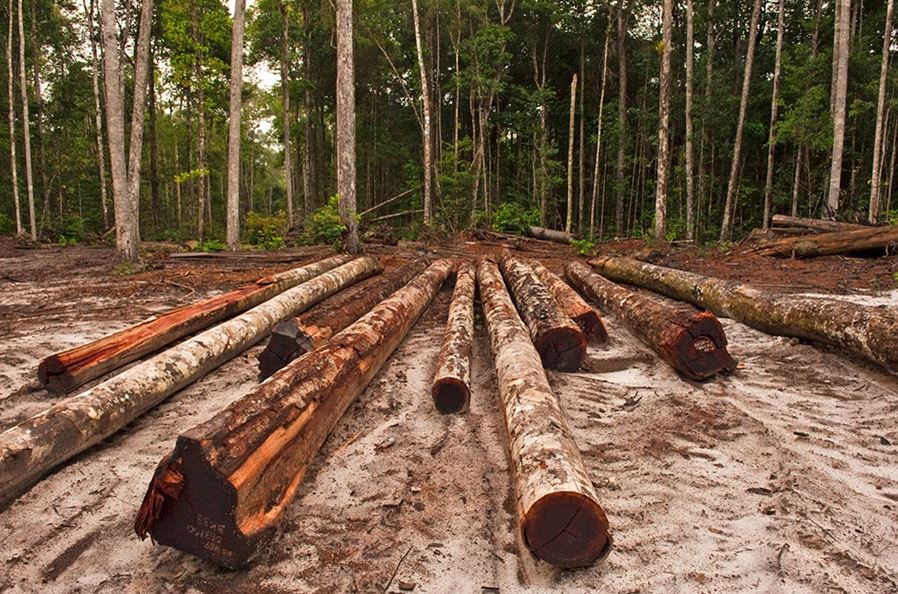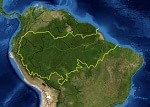Since the 1960s, we have destroyed more than 10% of the Amazon rainforest, say University of Edinburgh scientists, who add that this deforestation has contributed to the higher levels of carbon dioxide in our atmosphere, which is exacerbating the potential impact of climate change.
The Amazon basin encompasses 2.7 million square miles (7 million square kilometres), of which 2.1 million square miles (5.5 million square kilometres) are covered by rainforest. It is bigger than the whole of the European Union, which covers 1.707 million square miles (4,422 million square kilometres).
More than half of Earth’s remaining rainforests are in the Amazon. It comprises the biggest and most biodiverse tract of tropical rainforest in the world, with about 390 billion trees divided into 16,000 species.

Deforestation of the Amazon rainforest is reducing its ability to absorb carbon and will probably lead to the loss of several animal and plant species.
Mathew Williams and Jean-François Exbrayat, from the University’s School of GeoSciences and National Centre for Earth Observation, explained in the academic journal Geophysical Research Letters that the deforestation of the Amazon accounted for approximately 1.5% of the increase in levels of CO2 since the middle of the nineteenth century.
This increased the total carbon amount in our atmosphere only slightly, when compared to fossil fuel emissions, the main culprit.
The authors claim theirs is the first study to show how the extent of Amazon deforestation, by determining human activity, affected its ability to store carbon.
The Amazon rainforest would have 12% more vegetation today had deforestation not occurred. It would also cover a much wider area.
Plants help reduce impact of burning fossil fuels
Plants need carbon dioxide in order to grow – they absorb CO2 from the atmosphere in enormous quantities. Their metabolic activity helps offset some of the impact of fossil fuel emissions and reduce the pace of climate change.
Williams, Exbrayat and team created road maps to show what size the Amazon rainforest would be now if humans had not deforested large areas of it.
High-resolution satellite photographs were not available before the turn of the century, so the scientists made virtual models to work out how the Amazon had changed in previous decades.
By examining the models, they calculated how the loss of trees has undermined the Amazon’s ability to absorb carbon.
Loss of animal and plant species likely
The destruction of huge areas of the Amazon rainforest detrimentally affects its biodiversity and may lead to the loss of many plant and animal species.
Exbrayat explained:
“Our study indicates that the impact of large-scale deforestation on the Amazon carbon balance has been partially offset by ongoing regrowth of vegetation, despite sustained human activity.”
The research was financed by a Natural Environment Research Council grant.
Carbon absorbing capacity down 50% since 1990s
In a separate study, researchers reported in the journal Nature in March that the Amazon’s capacity to absorb carbon from the atmosphere has plunged by around 50% since the 1990s.
The 100 researchers, led by the University of Leeds in England, said the Amazon’s atmospheric carbon capture reached a peak of 2 billion tonnes per year in the 1990.
Today, unfortunately, it is not even able to absorb the fossil fuel emissions coming from Latin America.
Lead author Dr. Roel Brienen, said:
“Tree mortality rates have increased by more than a third since the mid-1980s, and this is affecting the Amazon’s capacity to store carbon.”
Citation: Jean-François Exbrayat and Mathew Williams. “Quantifying the net contribution of the historical Amazonian deforestation to climate change.” Geophysical Research Letter. Publised 19th April, 2015. DOI: 10.1002/2015GL063497.
BBC Video – Amazon deforestation linked to Brazil’s drought

